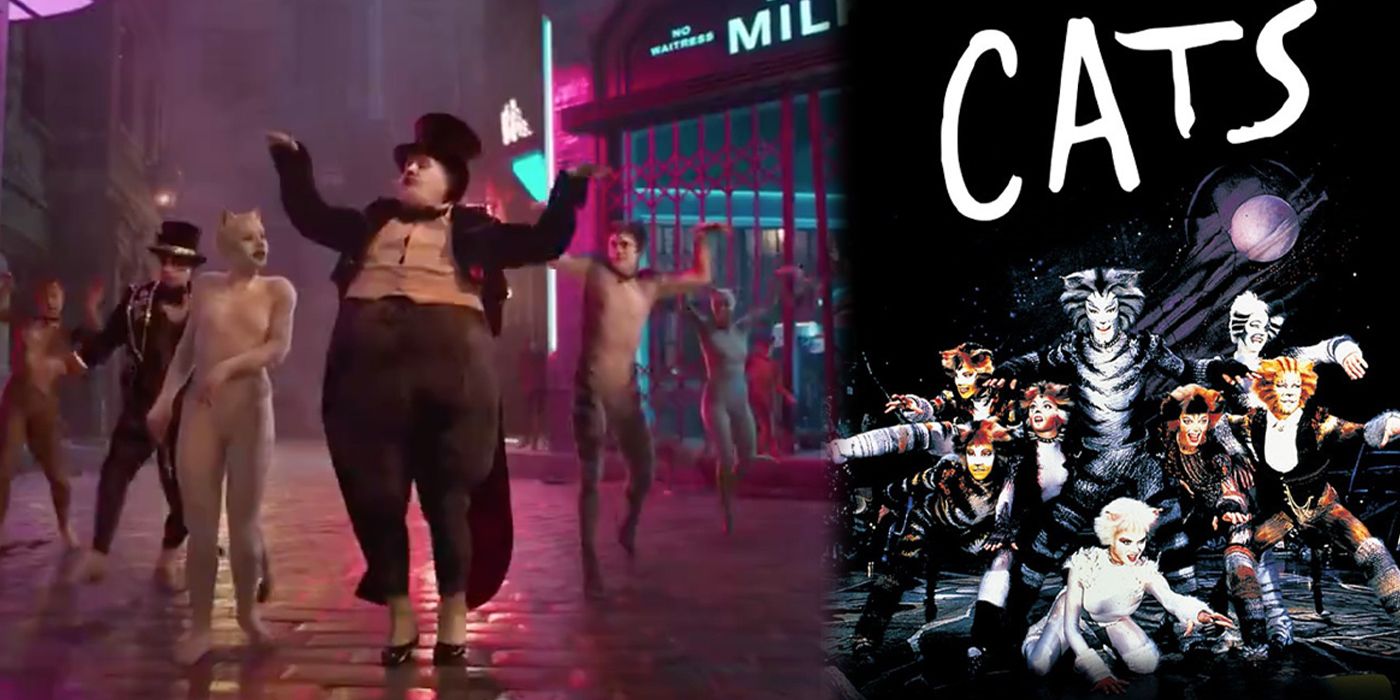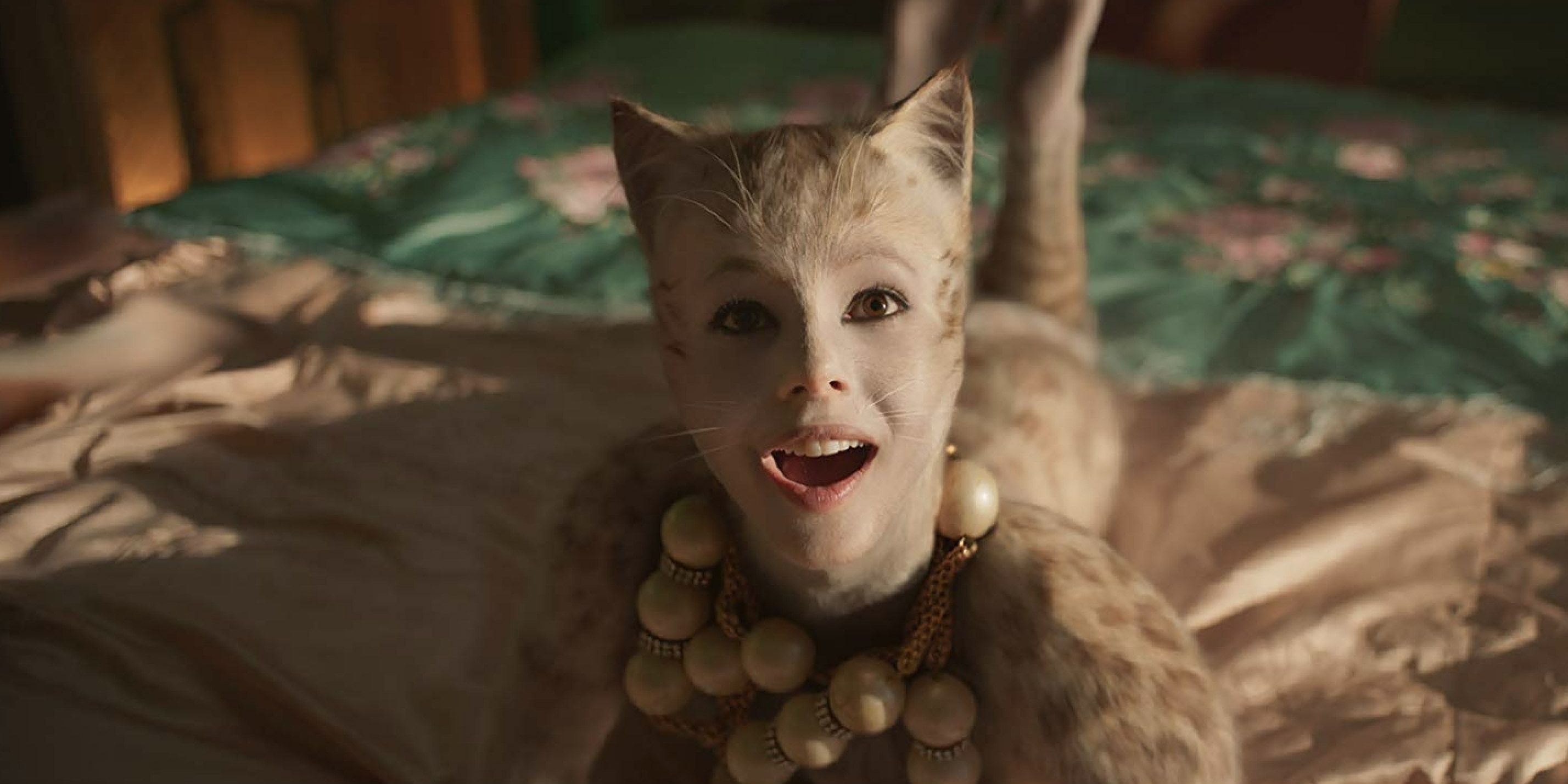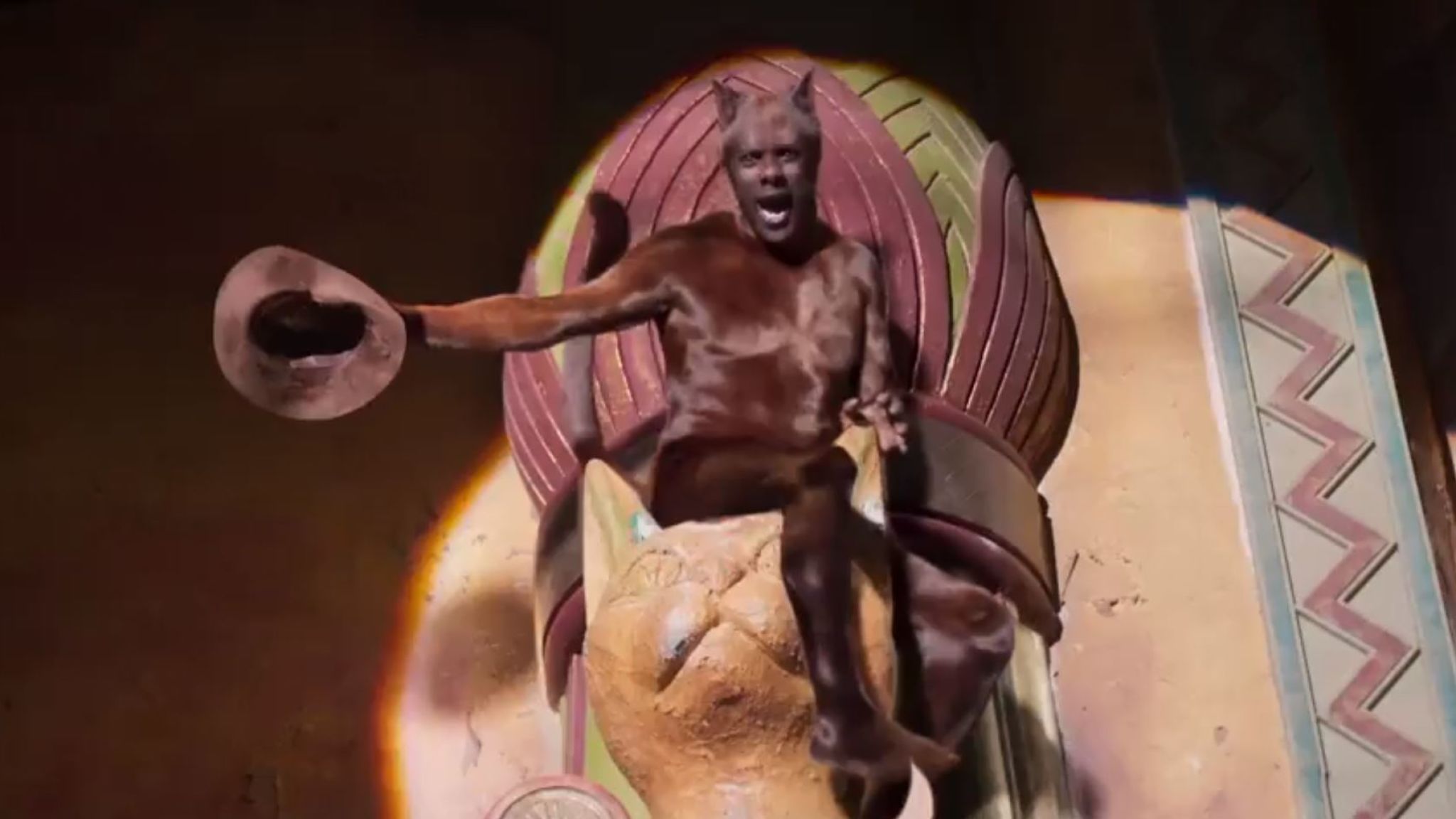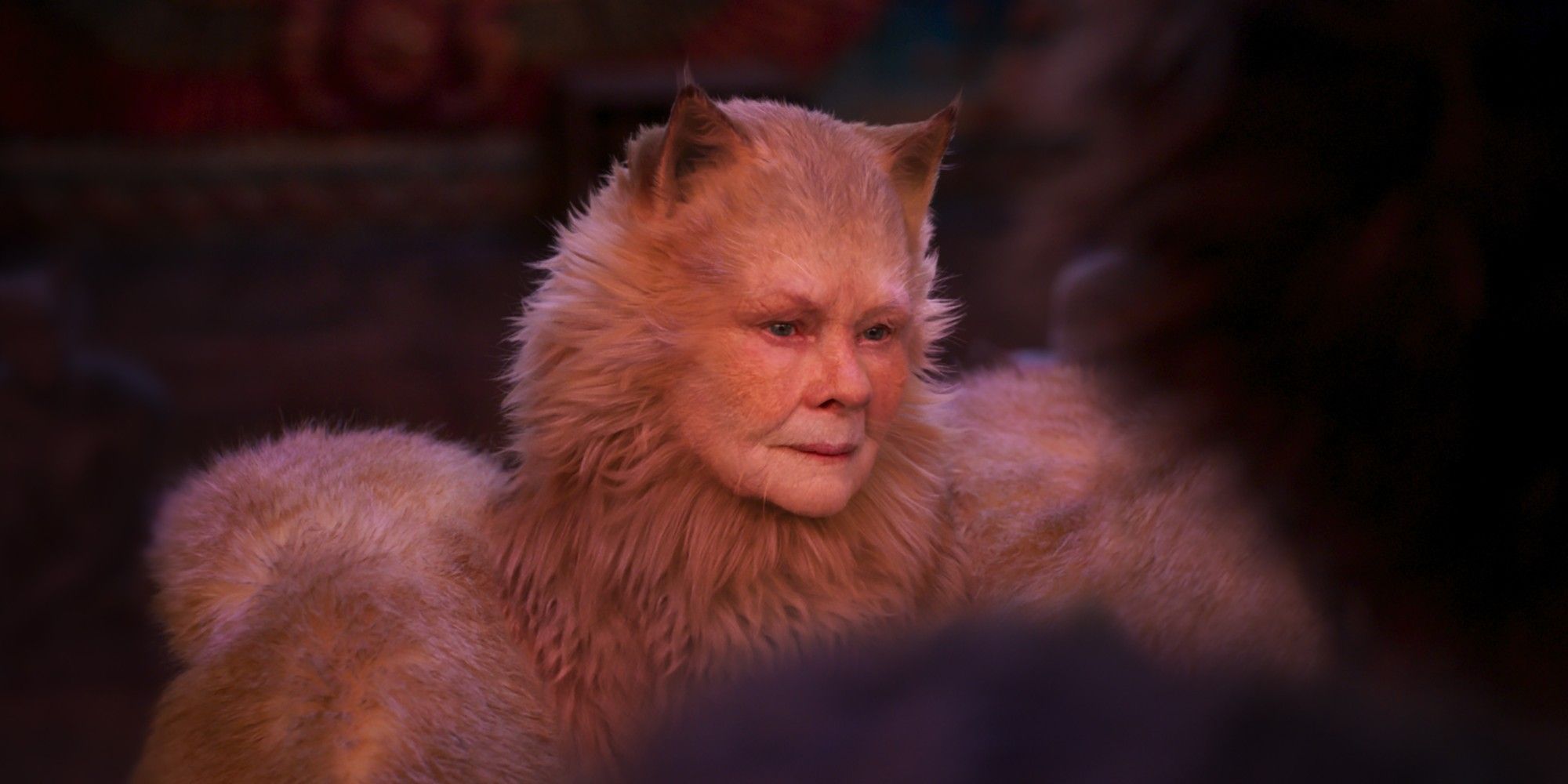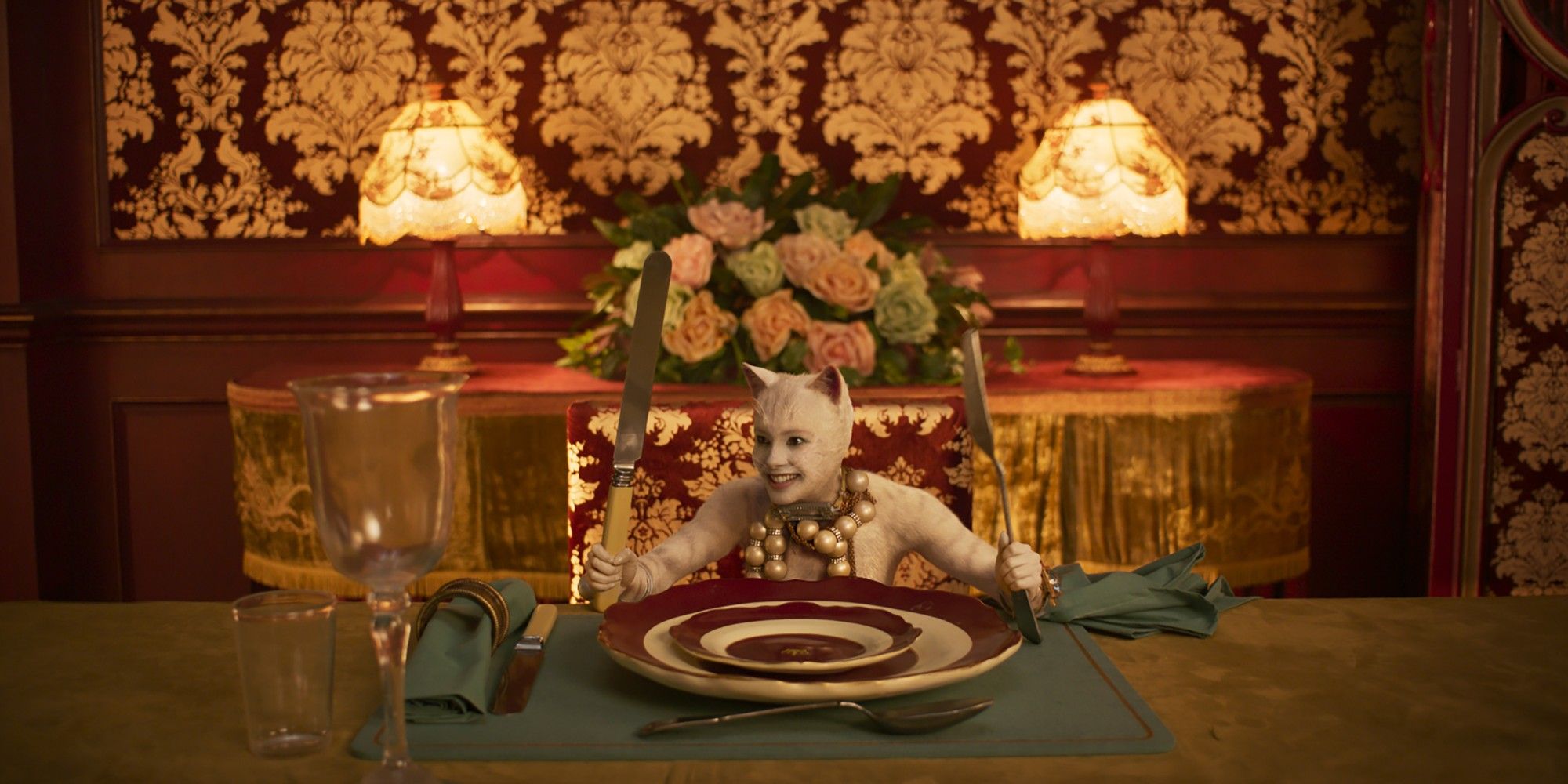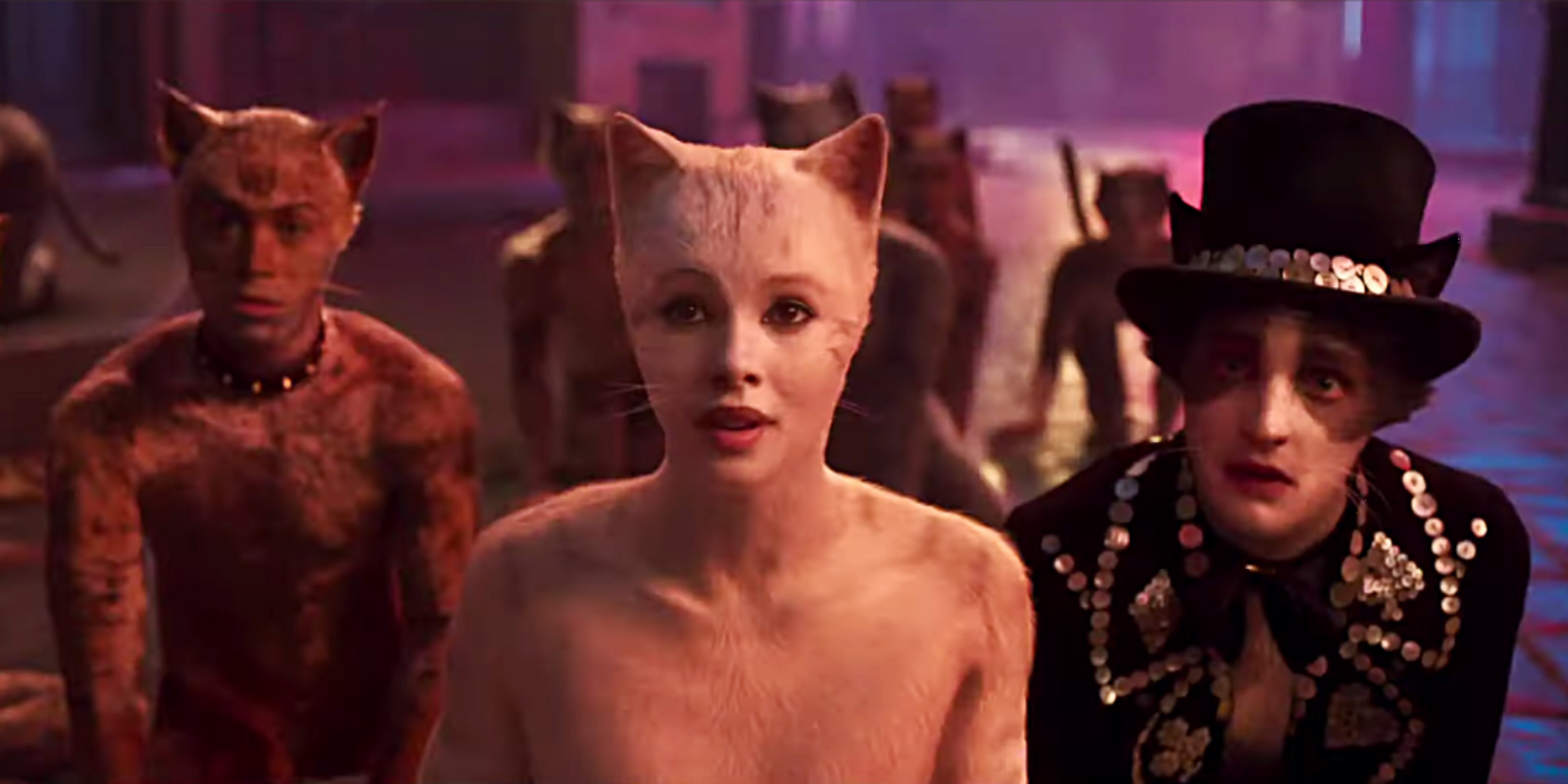The big-screen adaptation Cats is finally out in theaters confusing audiences worldwide, but how does it compare to the original musical? Even in a week where a new Star Wars film is dominating the box office and pop culture discourse at large, it’s been impossible to escape the frenzied conversations surrounding Cats. Universal and Tom Hooper’s adaptation of one of the longest-running musicals ever made has long promised to be, if nothing else, a memorable viewing experience. Few people, however, could have predicted how cataclysmic the end result would finally be. The opening weekend box office numbers were tragic, the reviews disastrous, and the much-vaunted “digital fur technology” so bad (and often unfinished) that the studio announced they’d be sending a new version of the film out to theaters with “improved” CGI.
Cats was always going to be an especially strange and tricky story to adapt to the big screen. The musical premiered on the West End in 1981 and stayed there for 21 years, despite Cats' story being notoriously off-the-wall in terms of structure, character, and plot, or lack thereof. The original Cats is based on a collection of poems by T.S. Eliot and as such doesn’t really have a linear story to tie its many songs together. It’s a show more interested in dance than plot, one where the costumes and sets take priority over the narrative. As such, it’s hardly the first Andrew Lloyd Webber musical one would think to make into a studio’s Christmastime family spectacle. Still, the musical remains very popular to this day and Universal clearly wanted to tap into that built-in fanbase, so Cats was greenlit and changes were made to wrangle this curious creature into something vaguely suitable for the cinematic experience.
Writer Lee Hall of Billy Elliot fame was brought on board to wrangle the story into a manageable screenplay, and Andy Blankenbuehler, the choreographer of Hamilton, took over from the iconic work pioneered in the original show by Gillian Lynne. Taking something inherently theatrical and making it cinematic is a process that has made many a director stumble. There was no way Cats could go from stage to screen with zero changes, and there are the major differences between the stage musical and the film.
Victoria is Now the Protagonist
On stage, Cats is an ensemble piece, one where no single character receives the lion’s share of attention or story. At its core, this is a musical of introductions, where each song is an opportunity for a character to take center stage for a few minutes before passing the torch onto someone else. In the original musical, the character of Victoria the White Cat doesn’t even get a song. She’s mostly a dance-focused character, one typically played by a ballet dancer because of the complexity of the choreography. For the film, Hooper and Hall have made Victoria, as played by ballet dancer Francesca Hayward, the heroine, one the story follows from beginning to end. She becomes the point-of-view character who is the audience’s avatar from song to song, rather than cats simply stepping forward and singing, like on stage.
Cats opens with Victoria’s human owner – the only human we see on-screen – abandoning her in an alleyway where she is discovered by the CGI-costumed Jellicle cats tribe. She is quickly, if hesitantly by some, welcomed into the group and allowed to witness the Jellicle choice, to be made by Old Deuteronomy. Victoria is also the one character to fully welcome the exiled Grizabella (Jennifer Hudson) into the group. In the musical, she is the first cat to touch Grizabella after her big “Memory” number but that doesn’t happen until the end. In the movie, we see her slowly trying to bring Grizabella into the fold, despite the rejection of the other cats. At the end of the film, she is fully welcomed into the tribe as a Jellicle, and she also gains a love interest in the form of Mister Mistoffelees, something not present in the musical.
Macavity is the Big Baddie
Macavity, "a most wanted cat", is not in the stage musical all that much. The so-called "Napoleon of Crime", he really only shows up for one big scene where his henchmen kidnap Old Deuteronomy and he tries to return to the tribe disguised as him. His cover is quickly blown by Demeter, one of the two cats who sings the Macavity song, and then he escapes. A more conventional cinematic narrative calls for a villain, so Idris Elba as Macavity has been given a far more prominent role in the movie.
Macavity is now the feared antagonist of the show but, like the other cats, covets the Jellicle Choice and the opportunity to be reborn into a better life. This is why he ends up kidnapping various cats who are his main competition for the top prize, including Bustopher Jones (James Corden), Jennyanydots (Rebel Wilson) and Gus the Theater Cat (Ian McKellen). After these cats’ respective musical numbers, Macavity appears to magic them away to a barge on the Thames manned by Growltiger (Ray Winstone.) Macavity’s magical powers are never explained.
Bombalurina, played by Taylor Swift, is now one of Macavity’s henchmen rather than simply being one of the cats who sings about him. She enters the scene on a crescent moon and gets all the other cats high with catnip before singing her song. Demeter is nowhere to be seen, presumably because Swift didn’t want to share her big musical number. During this moment, Old Deuteronomy is kidnapped and threatened with giving Macavity the Jellicle Choice or she’ll be forced to walk the plank. She is saved from this fate by Mister Mistoffelees' magic. Macavity is last seen when Grizabella flies off to the Heavyside Layer on a hot-air balloon attached to a chandelier. He tries to grab onto the chandelier and fly off with Grizabella, but slips and ends up on Nelson’s Column, stuck there indefinitely because all of a sudden his magical powers fail him (in the musical, only Mistoffelees has magic abilities).
Old Deuteronomy Is Now Female
On stage, Old Deuteronomy is a male cat, typically played by a baritone singer. The role was gender-flipped to allow Dame Judi Dench the opportunity to join the cast. She had famously originally been part of the first cast of the West End production in the role of Grizabella, which she pulled out of after snapping her Achille’s tendon during rehearsals (she was replaced by Elaine Page.) This change doesn’t really impact the story in any way except for one: Grizabella’s tragic story is partly rooted in her being rejected by society for being an aged woman seemingly past her prime. The poignancy of that is somewhat lost when the revered leader of the cats is Judi Dench (but also not helped by Grizabella being played by a much-younger Jennifer Hudson.) The change made here to fix that problem is the heavy implication that Grizabella was a feline sex worker and that Macavity was her pimp. In a movie full of inexplicable changes, this may be the most baffling one.
The Setting Is Expanded
Due to the limitations of the stage, Cats as a musical takes place on one set, a junk yard set to scale so that the human cast seems cat-sized by comparison. Film gives storytellers the opportunity to expand the world, so Cats now takes place all across London. We see how the cats live in the streets, how they party in Trafalgar Square, and how they infiltrate places like a milkshake bar, a family home, and an abandoned theater where the Jellicle Ball takes place. It’s one of the movie’s smarter moves, but the inconsistency in the scaling of the sets and props is endlessly distracting. It’s also a London where humans seem to disappear after dark.
Cats Is No Longer Dance Focused
When Cats premiered, its dance-focused approach was considered ground-breaking for the medium in the West End. British musicals were mostly rather quaint affairs where the plot would stop and actors would sing songs, with little in the way of complicated choreography, especially when compared to Broadway shows like West Side Story or Oklahoma! Gillian Lynne’s work on the show combined ballet, tap, jazz, and mime-style movement to allow the actors to tell the story through dance as much as song. Given the visual appeal of dance, one would think that Hooper and Universal would be keen to focus on that aspect for the movie. Alas, the show is startlingly uninterested in such things.
There is a lot of dancing in the movie, but none of it is used to tell the story in the way it does on stage, and Hooper's direction and editing make it near-impossible for the audience to focus on it. The unfocused staging and decision to add more plot removes the necessity of the dancing, to the point where it seems like they may have been better off removing it from the show altogether. Victoria's status as one of the main dancers is removed almost entirely thanks to strange directorial choices, which sort of negates the need to have a ballet dancer play the role.
While Cats was always going to be tough to bring to the big screen, many of the reasons it doesn’t work are rooted in the changes made from the stage musical. Some of them may have been necessary, but the implementation and reasoning behind them are sorely lacking; as a result, the end product is somehow even more confusing and nonsensical than the musical, which at least had the decency to embrace its inherent kitsch. Was there ever a way that a CGI-heavy Cats movie could have been good? That’s debatable, but those choices made for the adaptation process certainly could have been executed better.

